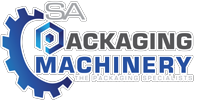VFFS vs Manual Packaging: Cost Savings and Output Differences
In today’s growing manufacturing sector, the debate between Vertical Form Fill Seal automation and manual packaging continues to shape how businesses operate. With rising labour costs, fluctuating demand, and the pressure to maintain consistent product quality, companies are looking for smarter ways to improve efficiency. Understanding the differences between automated and manual systems can help you make informed decisions about production, equipment, and long-term profitability.
This comparison aims to give you a clear, practical understanding of why modern automation — specifically VFFS — is transforming industries across South Africa. Whether you run a small workshop or a high-volume manufacturing plant, your packaging method can dramatically influence your output, product quality, and operational costs.
If you want to explore different machine models while reading this guide, feel free to browse our detailed product page here: SA Packaging Machinery VFFS Machines.
1. Manual Packaging: Simple but Limiting
Manual packaging remains common in small businesses because it’s affordable to start with and doesn’t require advanced technical training. Workers fill products by hand, seal by hand, label by hand, and pack each unit individually. For very small batches, this method “works,” but it has significant drawbacks as businesses begin to scale.
- Slower output rates
- Higher risk of inconsistent product quality
- Increased labour costs over time
- Human error in filling accuracy and sealing
- Difficulty meeting sudden increases in demand
Manual packing may feel simple, but it places a ceiling on business growth because output relies directly on workforce size and speed. As wages increase and demand becomes more competitive, many South African manufacturers are shifting toward automation for long-term sustainability.
2. The Power of VFFS Automation
A modern Vertical Form Fill Seal machine offers automated bag forming, filling, and sealing — all in one continuous process. This technology provides unmatched efficiency, especially when paired with an automatic filling machine, packaging filler, powder packaging machine, or sachet filling machine depending on the product type.
Here is a demonstration of how automated packaging works:
Automation ensures greater consistency, enabling improved product quality and maintaining fill accuracy, even at high speed. Whether you handle powders, liquids, granules, snacks, or small components, modern equipment — including sachet packing machine units, liquid packaging machine systems, and baling machine solutions — can deliver measurable improvements in efficiency and stability.
3. Cost Savings: VFFS vs Manual Packaging
One of the clearest advantages of upgrading to automation is cost efficiency. While a manual operation relies heavily on labour, an automated packaging line allows you to drastically reduce your operational costs over time.
| Factor | Manual Packaging | VFFS Automation |
|---|---|---|
| Labour Cost | High, continuous | Low, 1–2 operators required |
| Output Speed | Slow | Fast & consistent |
| Accuracy | Highly variable | Precision-controlled |
| Waste Reduction | Low | High |
| Scalability | Difficult | Easy |
A helpful resource on automation trends can be found on South Africa’s official manufacturing portal, which highlights how automation contributes to national productivity. This type of independent reference helps illustrate why automated systems are becoming essential for staying competitive.
4. Output Differences You Can Expect
A typical manual packaging team might process 5–12 packs per minute depending on the product and the skill of the workers. In contrast, an advanced **Vertical Form Fill Seal** system can operate between 30–80 packs per minute — sometimes even higher depending on bag style and filler type.
Here is another example showing the performance of a VFFS line in action:
When combined with modern systems — like a sachet packaging unit or packaging machines for sale in South Africa — manufacturers gain a scalable, flexible, and competitive production environment.
5. Why South African Businesses Choose SA Packaging Machinery
At SA Packaging Machinery, we specialise in helping businesses of all sizes upgrade from manual operations to reliable, automated systems. Our goal is simple: deliver high-performance solutions tailored to your product, budget, and production goals.
Here’s why manufacturers trust us:
- Industry expertise: 30+ years serving South Africa’s packaging sector.
- Wide machine selection: From compact sachet units to fully automated systems.
- After-sales support: Technicians, training, servicing, and spare parts.
- Custom builds: Tailored systems for powders, liquids, grains, and more.
Whether you’re scaling up production or upgrading from manual processes, our team is ready to assist with planning, installation, and maintenance. We offer a complete selection of packaging machine solutions designed for long-term value and reliability.
To discuss your production needs or request a quotation, visit our contact page: Contact SA Packaging Machinery.
Frequently Asked Questions
1. Is a Vertical Form Fill Seal machine suitable for small businesses?
Yes. Modern VFFS systems come in various sizes, including compact entry-level options ideal for small or growing businesses.
2. How much labour can automation reduce?
Most VFFS machines operate with only 1–2 operators, compared to 5–10 workers in manual operations.
3. What products can VFFS machines handle?
They can package powders, liquids, granules, snacks, chemicals, hardware items, and more with high accuracy.
4. Are automated machines difficult to maintain?
No. With proper training and routine servicing, they are easy to maintain and highly reliable.
5. How long does installation take?
Most VFFS machines can be installed and calibrated within a few days, depending on the system configuration.
6. Does SA Packaging Machinery offer training?
Yes — all machine purchases include operator training, after-sales support, and access to spare parts.
